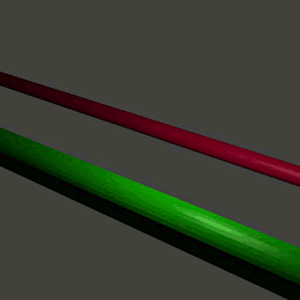Determining When to Shield Aircraft Wiring
As data speeds rise, the need for shielding can also increase. But shielding adds weight, cost, and can reduce flexibility, so it’s important to shield only when it’s necessary.
Determining When to Shield Aircraft Wiring
 A common question when it comes to designing an aircraft’s electrical wiring interconnect system (EWIS) is which of the cables should be shielded? There are several standards, such as MIL-STD-461, Requirements for the Control of Electromagnetic Interference Characteristics of Subsystems and Equipment, that provide an excellent basis for topics and testing that should be considered. But for those who aren’t interested in reading a 280-page standard, this article reviews several shielding considerations that should be made before making particular design choices.
A common question when it comes to designing an aircraft’s electrical wiring interconnect system (EWIS) is which of the cables should be shielded? There are several standards, such as MIL-STD-461, Requirements for the Control of Electromagnetic Interference Characteristics of Subsystems and Equipment, that provide an excellent basis for topics and testing that should be considered. But for those who aren’t interested in reading a 280-page standard, this article reviews several shielding considerations that should be made before making particular design choices.
Why Shield?
The quick and simple answer is to limit the impact of electromagnetic interference (EMI) on system performance. But just because EMI is a concern doesn’t mean that shielding should be used on the wiring for every system. The consequences of selecting a shielded cable construction include increased bend radius, increased weight, and increased installation/repair time.
There are a couple of options when protecting systems from EMI and implementing shielding. These options include: shielding only the signal wires, shielding only the power wires, and shielding both. Each of these is reviewed here.
Shield Signal Wires
The starting point for many engineers and EWIS designers is to limit the potential EMI impact on signal cables. After all, these cables, which send signals with low voltages (often less than 10V) at high data speeds, can be negatively impacted by the electrical noise of aircraft equipment. So, protecting the integrity of signals thus improves the confidence in the data integrity.
How far away does your wire/cable need to be to avoid the impacts of EMI? This is a difficult question to answer due to the many factors impacting EMI. Shielding can be an easier solution.
Of course, once the signal wires are identified for EMI protection/shielding, the question is whether the individual wires/pairs should also be shielded if inside a multiconductor cable. This decision is dependent on the data rate, as high frequencies generate more EMI and are more susceptible to EMI. With shielding a cable and the internal pairs, the outer shielding can be a generalized shield and the internal shield can be optimized to shield the frequencies likely to be carried by the internal wires.
The benefits of shielding the signal wires:
- Transmitted data for each system is isolated
- If improved EMI protection is needed, it can be implemented system by system
- Conceptually easy to address and plenty of available shielded cable options
Shield Power Wires
Another perspective is to shield the power wires. A typical aircraft design will have a larger percentage of signal wires than power wires, so it can be easier to shield the power wires.
When considering the latest trends in electrical power systems, there are several systems that gain equipment control with the use of pulse width modulation and wide frequency power generation. Each of these systems offer power and control benefits, but create new challenges for EMI. For example, the use of pulse width modulated power with high-frequency current changes (dI/dt) can generate strong electromagnetic flux (EMF) and impact nearby signal wires.
The benefits of shielding the power wires:
- Reduce the EMI sources throughout the aircraft
- Possible overall aircraft EMI reduction, thus reducing noise for sensitive electronic equipment
- Additional chafe protection for power cables
Shield Both
Another option is to shield both, which provides the benefits of both; however, this option comes with significant weight penalty. Solutions for reducing the overall weight burden of shielding exist, but there will always be a financial and weight cost for shielding. The difficulty with implementing this solution is that many of the harnesses become part of line replaceable units (LRUs), which aren’t designed for field maintenance of just the harness. Naturally, the argument here is: If you can increase the reliability of a wire harness by a factor of two (as an example, no data to support), would you be willing to remove the field serviceable capability?
The use of shielding to protect wiring and signals has been around for generations, but the importance of protecting signal integrity is more important than ever in modern aircraft designs. There are multiple strategies for accomplishing this, and the implementation of shielding is entirely dependent on the performance requirement and the operation frequencies of the signal equipment.
In the end, it comes down to what design choice can create the safest EWIS design capable of completing the prescribed task.
[hr]
Michael Traskos is an EWIS Designated Engineering Representative at Lectromec, a company that specializes in full life cycle wire systems testing, engineering support, and risk analysis. Michael can be reached at [email protected].
Recently posted:
[related_posts limit=”10″]






